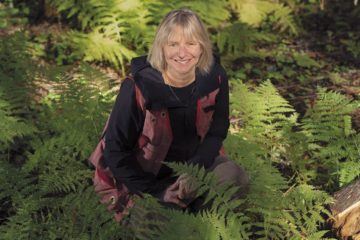Richard Schiffman in Scientific American:
 Few researchers have had the pop culture impact of Suzanne Simard. The University of British Columbia ecologist was the model for Patricia Westerford, a controversial tree scientist in Richard Powers’s 2019 Pulitzer Prize–winning novel The Overstory. Simard’s work also inspired James Cameron’s vision of the godlike “Tree of Souls” in his 2009 box office hit Avatar. And her research was prominently featured in German forester Peter Wohlleben’s 2016 nonfiction bestseller The Hidden Life of Trees.
Few researchers have had the pop culture impact of Suzanne Simard. The University of British Columbia ecologist was the model for Patricia Westerford, a controversial tree scientist in Richard Powers’s 2019 Pulitzer Prize–winning novel The Overstory. Simard’s work also inspired James Cameron’s vision of the godlike “Tree of Souls” in his 2009 box office hit Avatar. And her research was prominently featured in German forester Peter Wohlleben’s 2016 nonfiction bestseller The Hidden Life of Trees.
What captured the public’s imagination was Simard’s findings that trees are social beings that exchange nutrients, help one another and communicate about insect pests and other environmental threats. Previous ecologists had focused on what happens aboveground, but Simard used radioactive isotopes of carbon to trace how trees share resources and information with one another through an intricately interconnected network of mycorrhizal fungi that colonize trees’ roots. In more recent work, she has found evidence that trees recognize their own kin and favor them with the lion’s share of their bounty, especially when the saplings are most vulnerable.
Simard’s first book, Finding the Mother Tree: Discovering the Wisdom of the Forest, was released by Knopf this week. In it, she argues that forests are not collections of isolated organisms but webs of constantly evolving relationships. Humans have been unraveling these webs for years, she says, through destructive practices such as clear-cutting and fire suppression. Now they are causing climate change to advance faster than trees can adapt, leading to species die-offs and a sharp increase in infestations by pests such as the bark beetles that have devastated forests throughout western North America.
More here.
